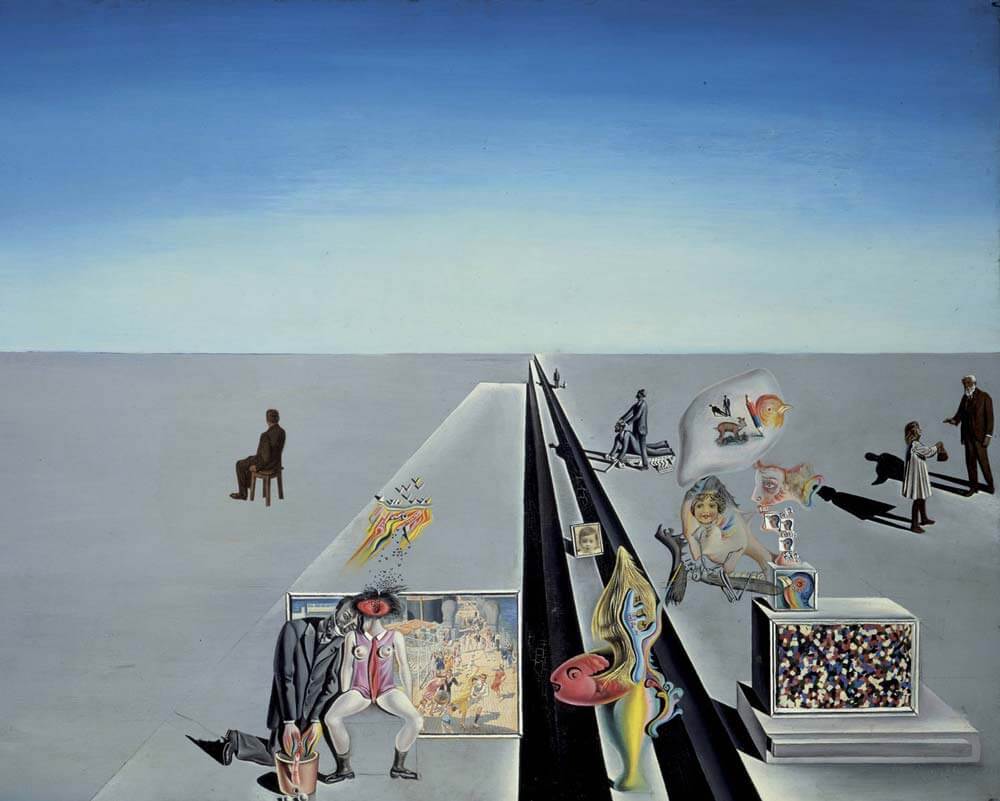The First Days of Spring, 1929 by Salvador Dali

The First Days of Spring shows two figures in the left foreground. One is a man leaning against a strange, human-sized doll. They sit in front of a painting that is painted in the way to make a strip of gray land look three dimensional. On top of it is a brightly colored abstract figure. In the middle distance, a man sits in a chair, looking outward.
On the highway itself is a brightly colored creature that seems an amalgam of a parrot fish, blue coral and some creatures that might exist only in the mind of the famously eccentric artist. A bit down the highway is a picture. In the distance stands another lonesome figure.
Freud's The Interpretation of Dreams is the primary influence behind the painting. Sigmund Freud proposed that the source of people's fears, desires and neuroses can be found in their childhood experiences; Dali places a photo of himself as a child in the center of this canvas, suggesting that various images in the painting might relate to his own childhood memories. A grey wasteland is the stage for his visions, where he places clusters of figures together as if connected through the free associations of dreams.























